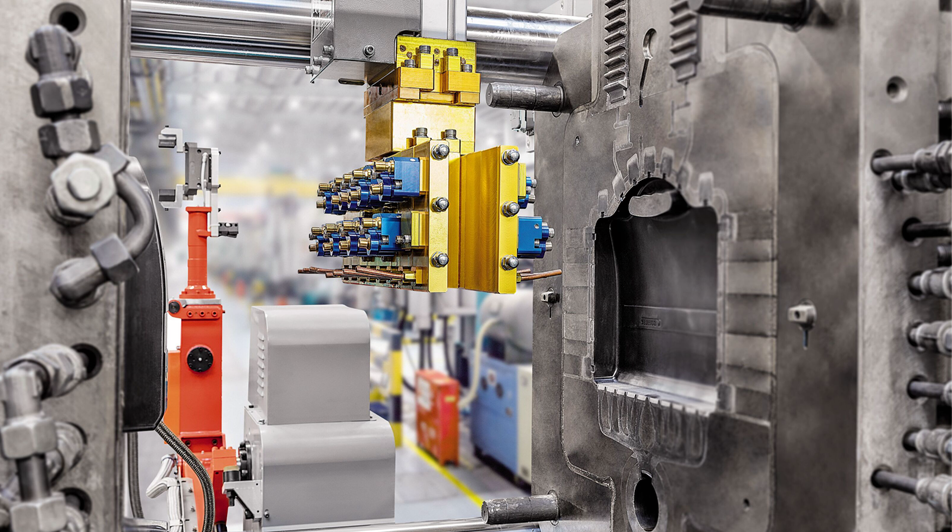Aluminum die casting is a widely used manufacturing process for producing high-quality metal parts with complex shapes and excellent surface finishes. The success of this process heavily relies on the design and manufacturing of precision aluminum die-cast molds. In this guide, we will explore the key steps and considerations involved in creating efficient aluminum die-cast molds.
Mold Design:
The first and most crucial step in the manufacturing process is the mold design. A well-designed mold ensures the production of accurate and high-quality parts. Here are some key factors to consider during the mold design process:
a. Part Geometry: Study the part\’s geometry carefully to identify any undercuts, draft angles, or complex features that may affect the mold design.
b. Cooling System: Incorporate an efficient cooling system in the mold design to control the temperature of the molten aluminum and facilitate faster solidification. This helps in reducing cycle times and improving productivity.
c. Ejector System: Plan the ejector system to ensure easy removal of the parts from the mold. Consider the part\’s shape and size to determine the appropriate ejector pin configuration.
d. Wall Thickness: Maintain consistent wall thickness throughout the part design to avoid defects such as porosity or shrinkage. Uneven wall thickness can lead to inconsistent filling and cooling of the mold.
Material Selection:
Choosing the right material for the mold is critical to its performance and longevity. Aluminum alloys such as H13, H11, and H21 are commonly used due to their excellent thermal conductivity, high strength, and good resistance to wear and corrosion. Consider the operating conditions, production volume, and budget constraints when selecting the mold material.
Mold Manufacturing:
Once the mold design is finalized, it is time to manufacture the mold. Several factors influence the efficiency and quality of mold manufacturing:
a. CNC Machining: Computer Numerical Control (CNC) machining is widely used to create precision molds. It ensures accurate dimensions, reduces human error, and allows for complex geometries.
b. Surface Finishing: Pay attention to the surface finish of the mold. Proper polishing and texturing can enhance the part\’s appearance and reduce the need for additional post-processing.
c. Heat Treatment: Apply appropriate heat treatment techniques to improve the hardness and strength of the mold. This helps to withstand the high pressures and temperatures during the die-casting process.
Mold Maintenance:
Regular mold maintenance is crucial to ensure consistent performance and extend the mold’s lifespan. Here are some essential maintenance practices:
a. Cleaning: Regularly clean the mold to remove any residue or buildup that can affect the surface finish or part quality.
b. Lubrication: Apply a suitable lubricant to the mold surfaces to minimize friction and prevent sticking of the molten aluminum.
c. Inspection: Regularly inspect the mold for any signs of wear, damage, or misalignment. Address any issues promptly to avoid production disruptions.
d. Repair and Modification: When necessary, repair or modify the mold to fix any defects or accommodate design changes. Work with experienced mold repair technicians to ensure precision and quality.
Conclusion:
Creating precision aluminum die-cast molds is a critical step in achieving efficient manufacturing of high-quality parts. By following the key steps outlined in this guide, manufacturers can design and manufacture molds that meet the complex requirements of the die-casting process. Remember to consider factors such as mold design, material selection, manufacturing techniques, and maintenance practices to ensure successful and cost-effective production.
-

- parts&comopnents for bicycle suspension fork for MTB
-

- Magnesium Aluminium alloy die casting parts Chain cover for automotive
-

- Magnesium alloy die-casting Auto parts RDM housing
-

- Custom-made die casting parts&comopnents for bicycle suspension fork for MTB
-

- Magnesium alloy thixomolding die-casting UAV parts
-

- Custom-made metal parts macbook middle board produced

 0086-750-5616188
0086-750-5616188 +86 13392089688
+86 13392089688 sales@zhongmei-tech.com
sales@zhongmei-tech.com









